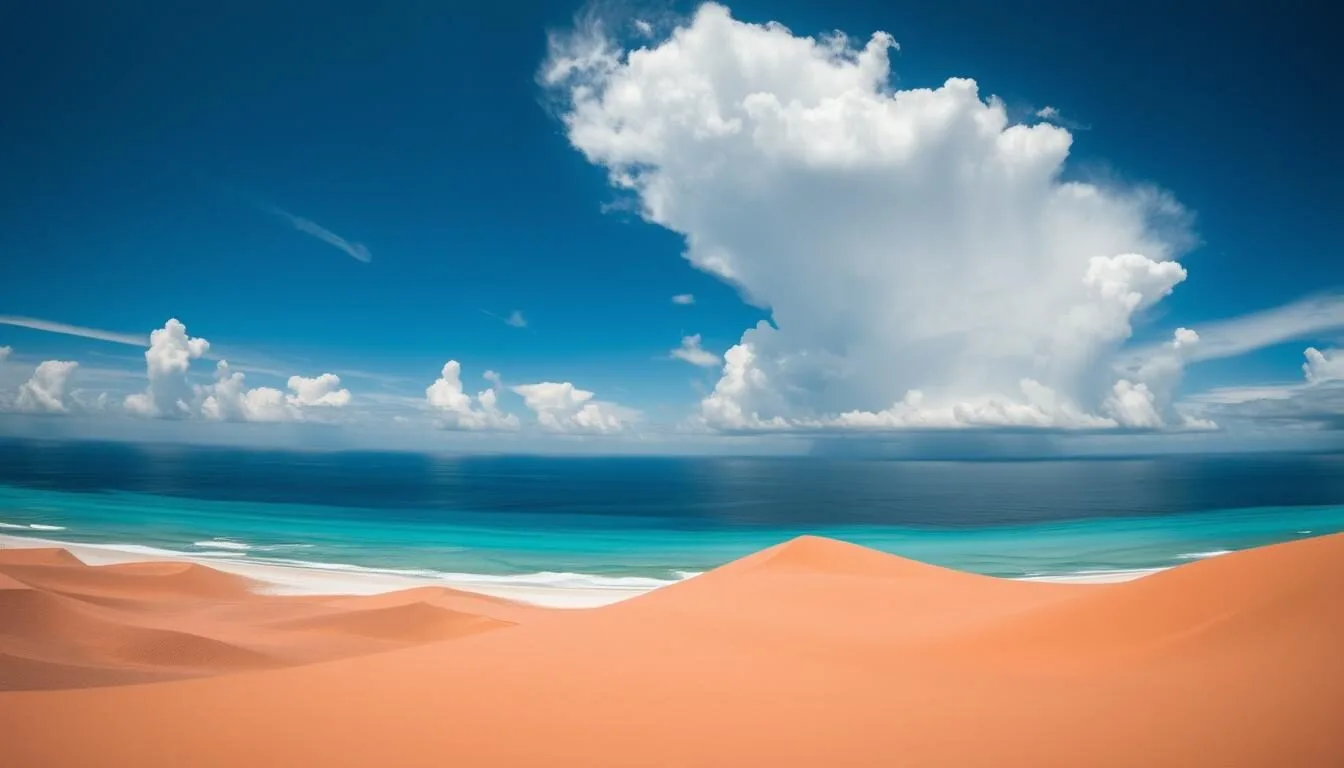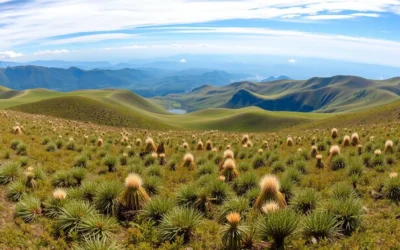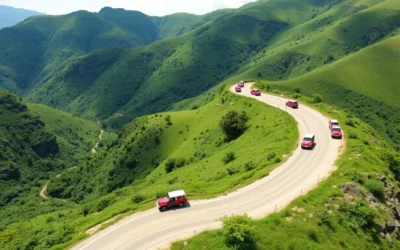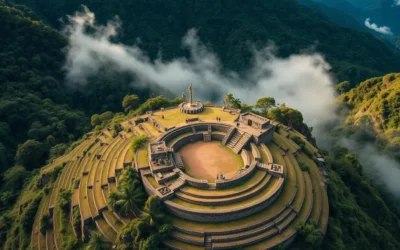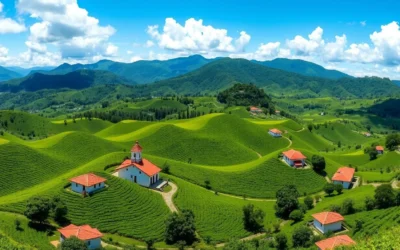Getting There & Planning Your Journey
Reaching La Guajira requires some planning, but the reward is access to one of Colombia’s most unique landscapes. Most travelers begin their journey in Riohacha, the capital city of La Guajira department, which serves as the gateway to the peninsula.
How to Reach Riohacha
By Air: The easiest way to reach Riohacha is by flying into Almirante Padilla Airport (RCH) from Bogotá or other major Colombian cities. Flights are limited but regular.
By Bus: Long-distance buses connect Riohacha with Santa Marta (3 hours), Cartagena (6-7 hours), and other major cities. This is an economical option if you have time to spare.
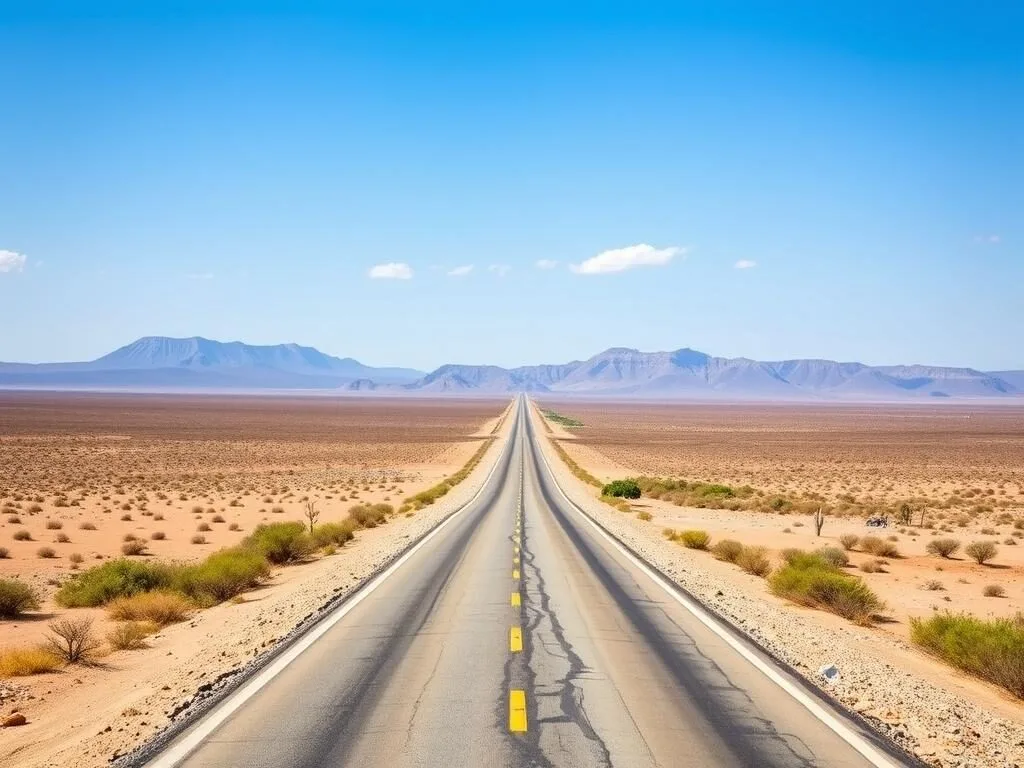
Tour or Independent Travel?
Once in Riohacha, you have two options for exploring La Guajira:
Guided Tour (Recommended)
For most travelers, joining a guided tour is the most practical option. Tours typically range from 1-4 days and include:
- Transportation in 4×4 vehicles
- Accommodation in hammocks or basic rooms
- Meals and water
- Local Wayuu guides
- Access to remote areas like Punta Gallinas
Tours cost between 600,000-1,200,000 COP ($150-300 USD) depending on duration and inclusions.
Independent Travel
While more challenging, independent travel is possible for adventurous travelers. Consider this option if:
- You speak decent Spanish
- You have significant time flexibility
- You’re comfortable with basic accommodations
- You’re prepared for transportation challenges
Independent travel costs about the same as tours when all expenses are tallied, but offers more flexibility.
Best Time to Visit & Weather Tips
La Guajira has a hot, arid climate year-round with temperatures consistently between 27-35°C (80-95°F). The region receives very little rainfall, making it one of the driest parts of Colombia.
Dry Season (December-April)
This is generally considered the best time to visit La Guajira. The weather is hot but relatively stable, with clear skies and minimal chance of rain. Roads are more easily passable during these months.
Rainy Season (May-November)
While still relatively dry compared to other parts of Colombia, these months see occasional rainfall. October typically receives the most precipitation. Heavy rains can make desert roads impassable, potentially disrupting travel plans.
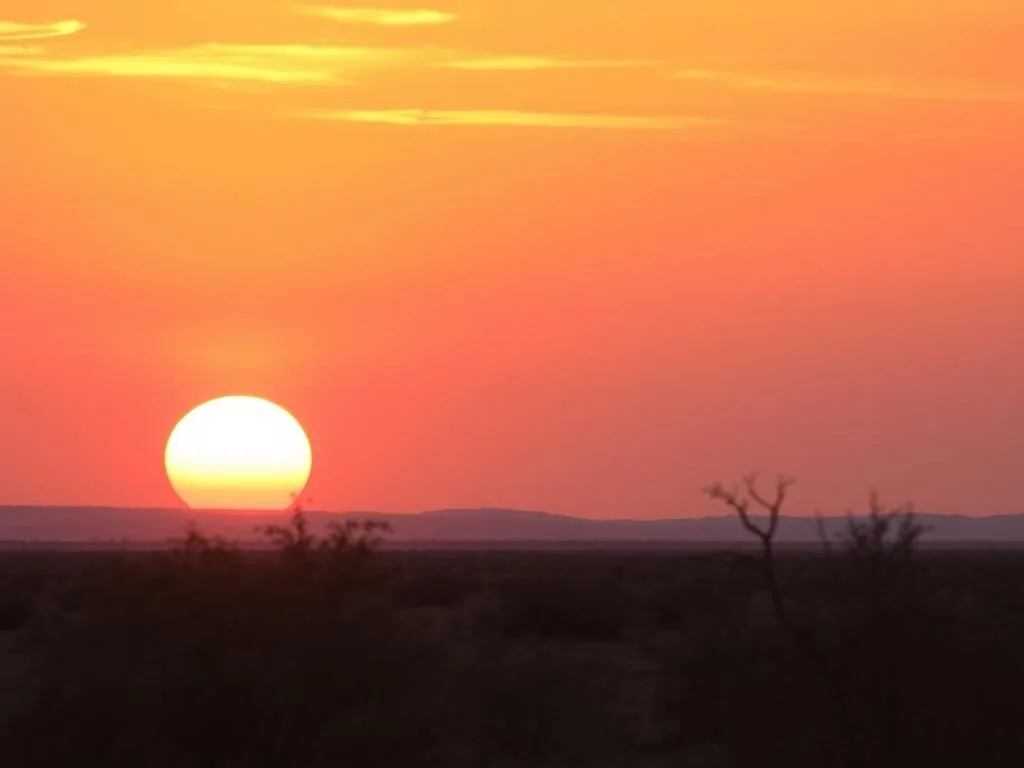
Packing Tip: Regardless of when you visit, bring plenty of lightweight, breathable clothing, a wide-brimmed hat, high-SPF sunscreen, sunglasses, and a reusable water bottle. Temperatures drop at night, so a light jacket or sweater is also recommended.
Getting Around Locally
Navigating La Guajira’s remote landscapes requires preparation and the right transportation. The further north you go, the more challenging the terrain becomes.
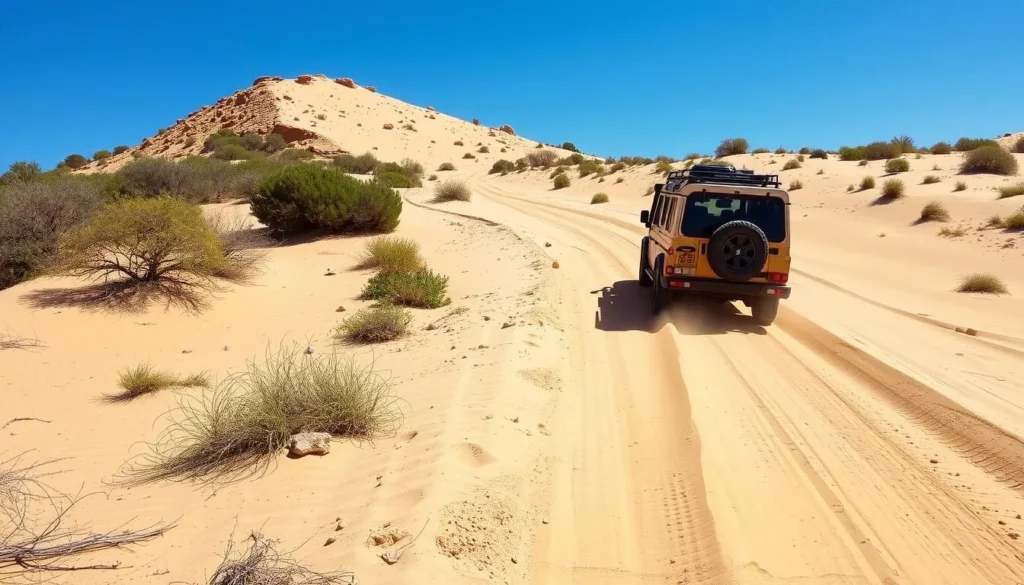
Transportation Options
In Riohacha
Taxis and motorcycle taxis (mototaxis) are readily available for getting around the city. Agree on a price before starting your journey.
To Cabo de la Vela
Public transportation involves taking a bus to Uribia, then a shared 4×4 vehicle (colectivo) to Cabo. This route is manageable independently.
To Punta Gallinas
Reaching the northernmost point requires 4×4 vehicles and local knowledge of unmarked desert paths. A guided tour is strongly recommended.
Important: Roadblocks are common in La Guajira. These are typically managed by local Wayuu communities who may request small payments or gifts (water, snacks) to pass through their territory. This is a normal part of traveling in the region and should be approached with respect.
Where to Stay
Accommodation in La Guajira ranges from comfortable hotels in Riohacha to basic hammocks in traditional Wayuu rancherías (settlements) as you venture further north. Embrace the simplicity—it’s part of the authentic experience!
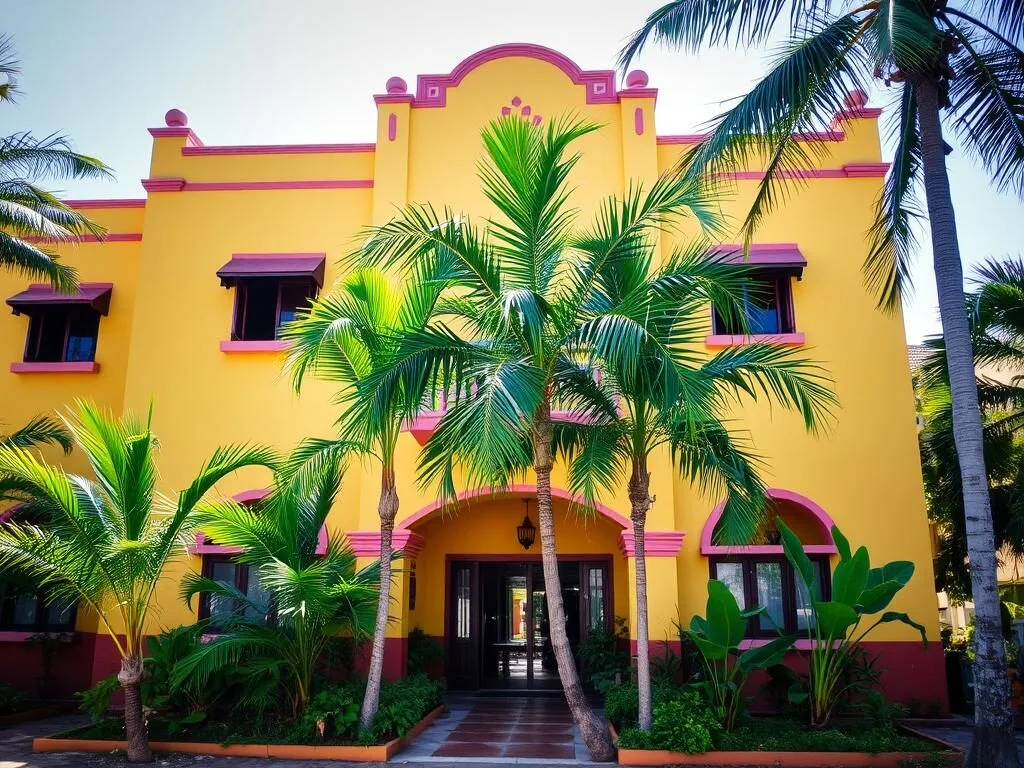
Riohacha
The capital offers the most comfortable accommodation options, from budget hostels to mid-range hotels. Most have air conditioning, Wi-Fi, and other modern amenities.
Recommended: Hotel Taroa, Hotel Arimaca, Casa Colibrí
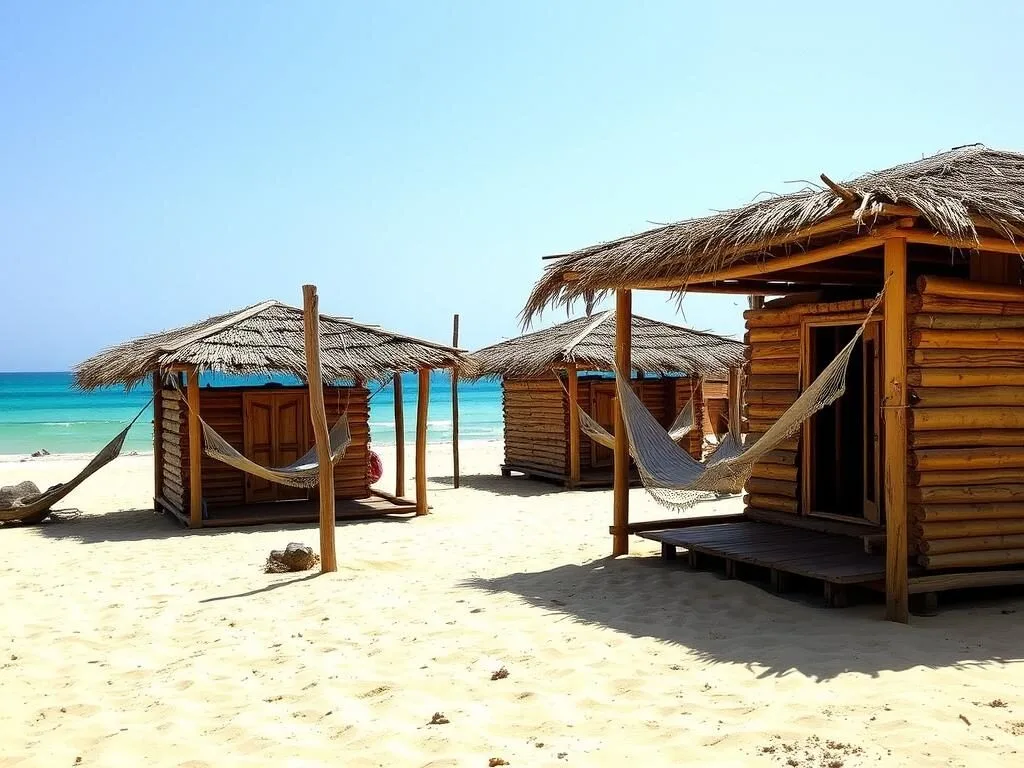
Cabo de la Vela
This small fishing village offers basic hostels and rancherías. Most places offer hammocks or simple rooms with shared bathrooms. Electricity is typically available only from evening until around 10 PM.
Recommended: Ranchería-Hotel Cabo Playa, Kite Hostel
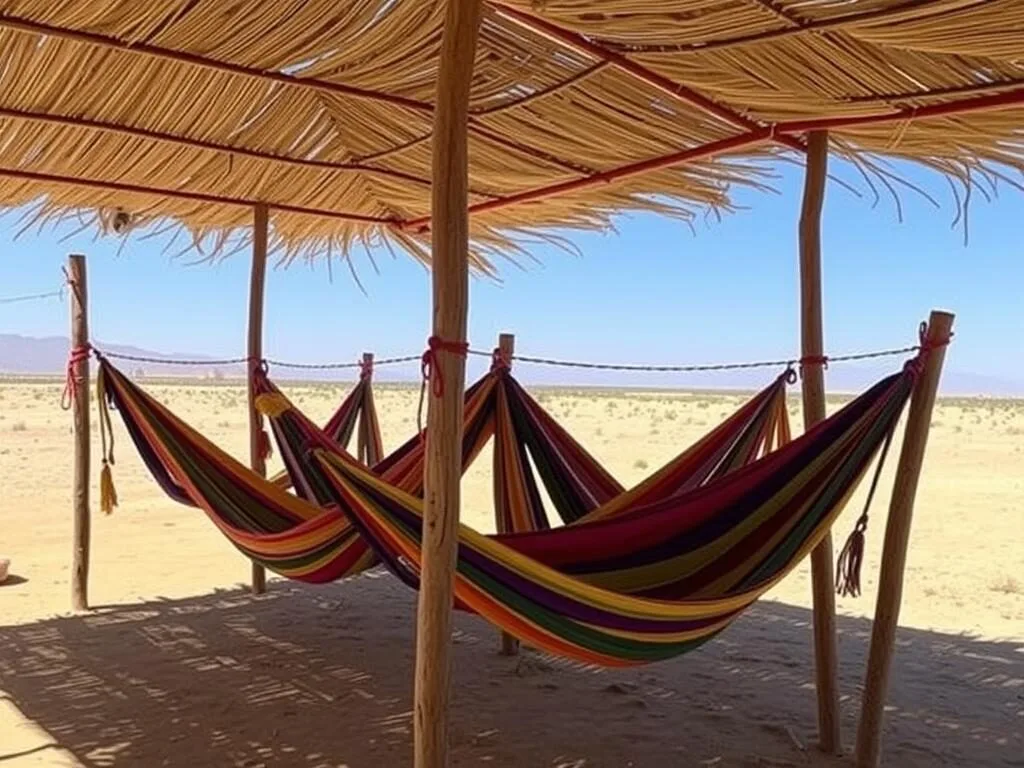
Punta Gallinas
The northernmost point offers very basic accommodation in hammocks or simple rooms at places like Hospedaje Alexandra. Expect limited electricity, bucket showers, and stunning stargazing opportunities.
Recommended: Hospedaje Alexandra, Hospedaje Luzmila
Find Your Perfect Stay in La Guajira
From comfortable hotels in Riohacha to authentic Wayuu rancherías in the desert, book your accommodation now to secure the best options.
Dining & Local Cuisine
La Guajira’s cuisine reflects its coastal location and indigenous heritage, with fresh seafood, goat meat, and tropical fruits featuring prominently. As you travel further into the peninsula, food options become more limited but no less authentic.
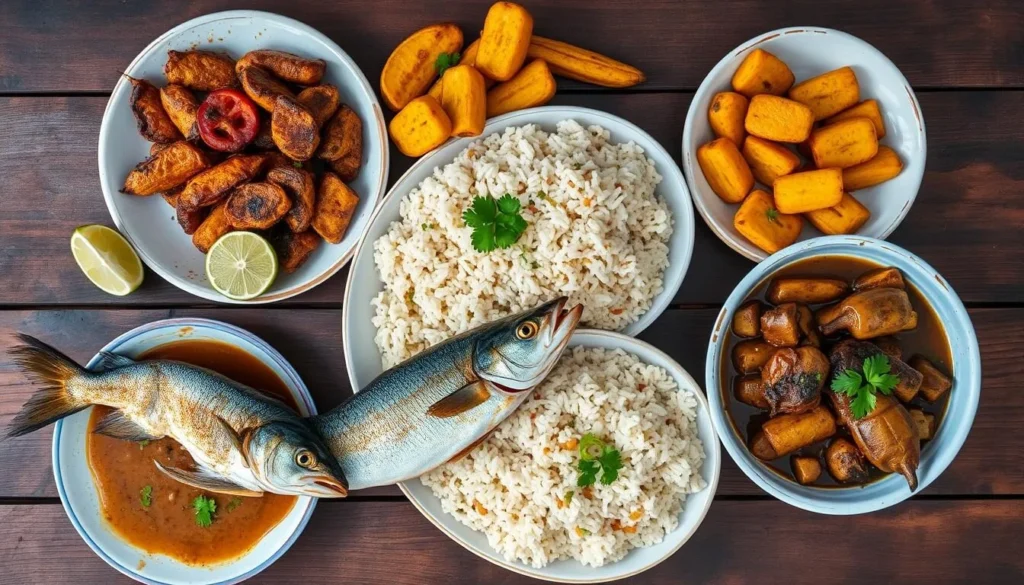
Must-Try Local Dishes
- Friche – A traditional Wayuu dish made from goat meat marinated in bitter orange and spices
- Arroz con Coco – Coconut rice, a staple side dish throughout the Caribbean coast
- Chivo en Salsa – Slow-cooked goat in a flavorful sauce
- Pescado Frito – Fresh fried fish, usually served with coconut rice and patacones (fried plantains)
- Chicha – A refreshing fermented corn drink
- Mazamorra – A sweet corn-based dessert
- Café Wayuu – Strong, locally-grown coffee prepared in the traditional way
- Iguana – In some areas, iguana meat is prepared in stews (seasonal)
Dining Tip: On multi-day tours, meals typically consist of simple but filling dishes—often fish or chicken with rice and salad. If you have dietary restrictions, communicate these clearly when booking your tour. Bringing some non-perishable snacks is always a good idea.
Where to Eat
In Riohacha, you’ll find numerous restaurants along the seafront malecón (promenade) serving fresh seafood with ocean views. As you travel north, food options become more limited to what’s available at your accommodation or small local eateries.
Recommended in Riohacha: Restaurante Donde Francesca, Brisas del Mar, Restaurante Camino del Sol
Top Attractions & Sightseeing
La Guajira offers a striking combination of natural wonders and cultural experiences. Here are the must-visit attractions that make this remote peninsula worth the journey:
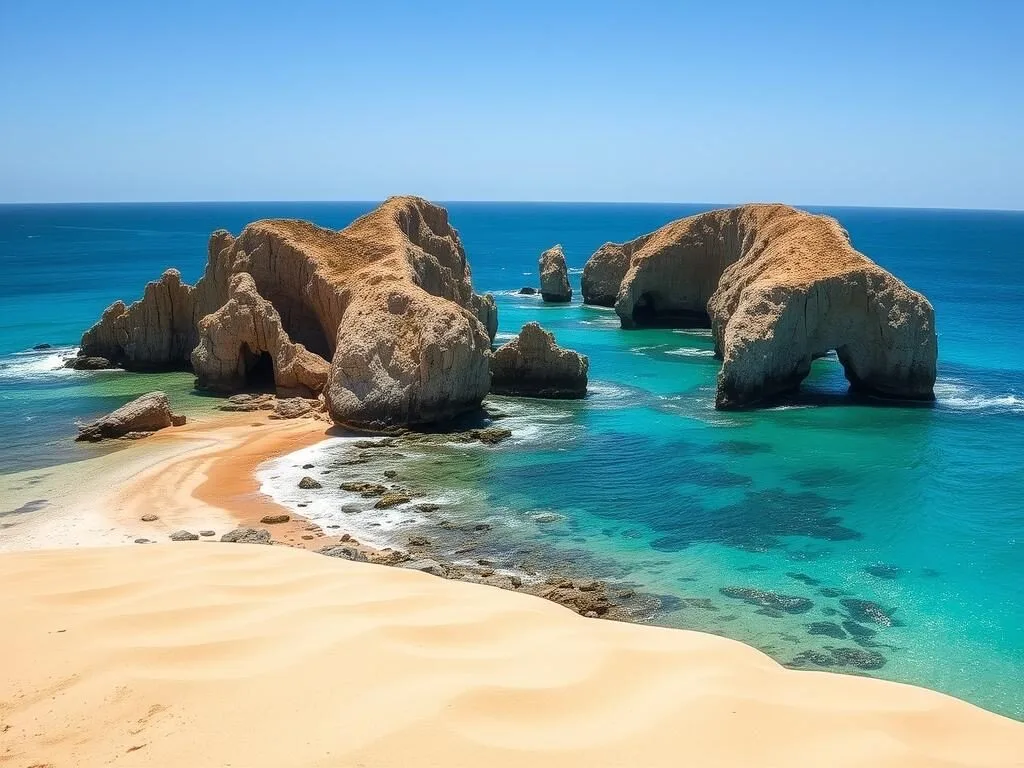
Cabo de la Vela
This small fishing village is the most accessible destination in upper La Guajira. Known for its stunning beaches and rock formations, it’s a popular spot for kitesurfing due to consistent strong winds.
Don’t Miss: Pilón de Azúcar (a sacred hill with panoramic views), Playa Ojo de Agua (Eye of Water Beach), and El Faro (the lighthouse) for spectacular sunsets.
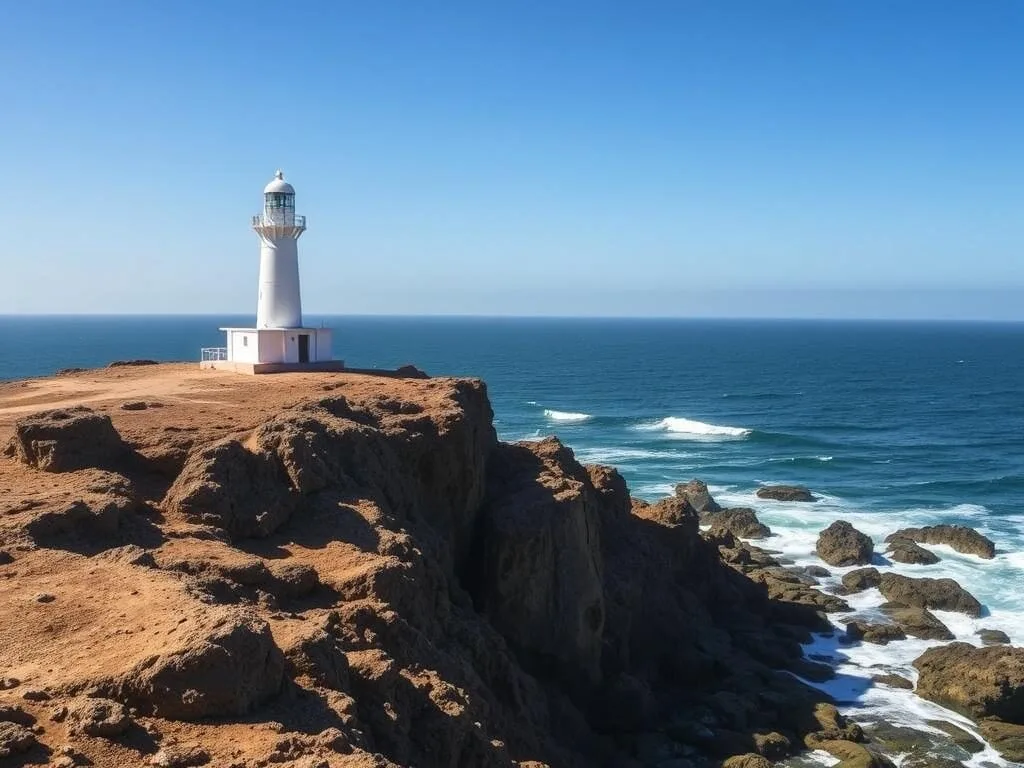
Punta Gallinas
The northernmost point of South America offers some of the most dramatic landscapes in Colombia. This remote area features pristine beaches, towering sand dunes, and rugged desert terrain.
Don’t Miss: The lighthouse marking the northernmost point, Bahía Hondita (a sheltered bay with flamingos), and watching the sunset from the dunes.
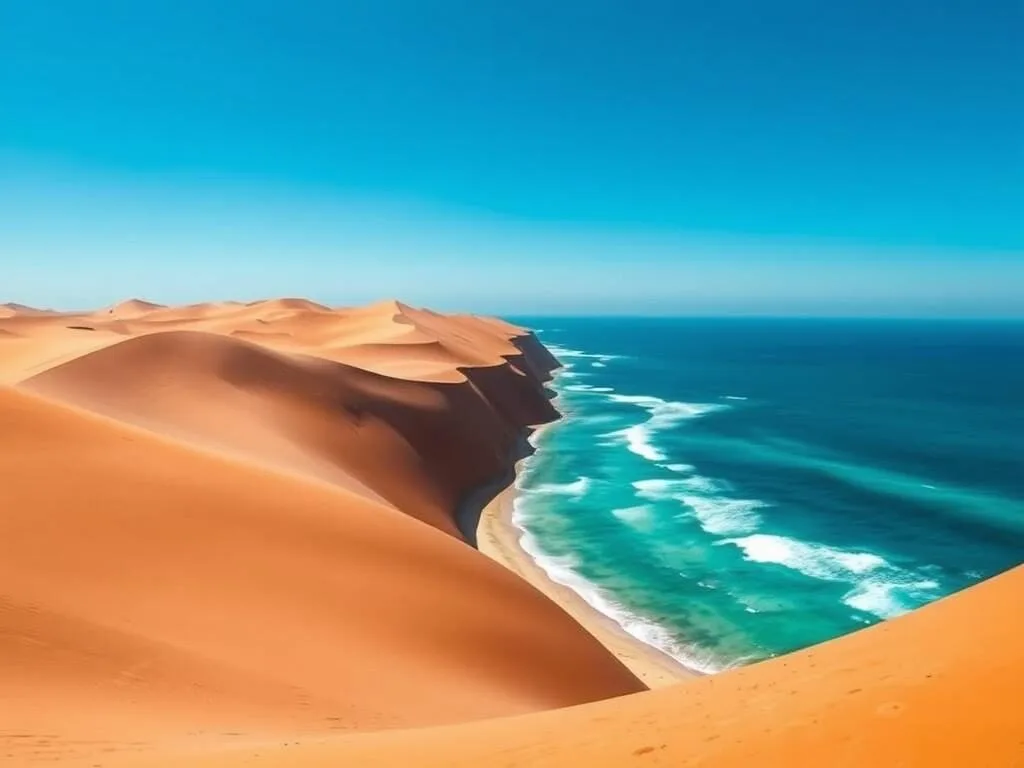
Taroa Dunes
Perhaps the most photographed spot in La Guajira, these massive sand dunes dramatically plunge directly into the Caribbean Sea. The contrast between the golden-red sand and the turquoise water is simply breathtaking.
Activity: Try sandboarding down the dunes into the refreshing waters below (boards can be rented on-site).
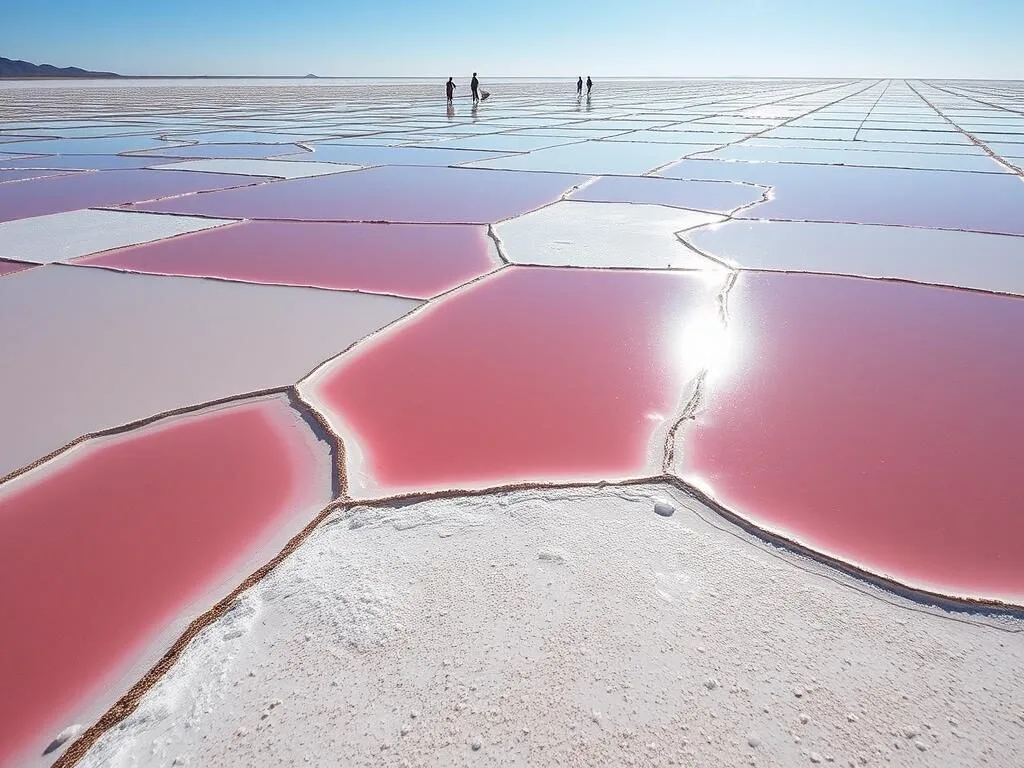
Manaure Salt Flats
The Salinas de Manaure are vast salt flats where salt has been harvested by the Wayuu for generations. The colorful evaporation pools create a surreal landscape that’s perfect for photography.
Experience: Learn about the traditional salt extraction process and purchase locally produced salt as a souvenir.
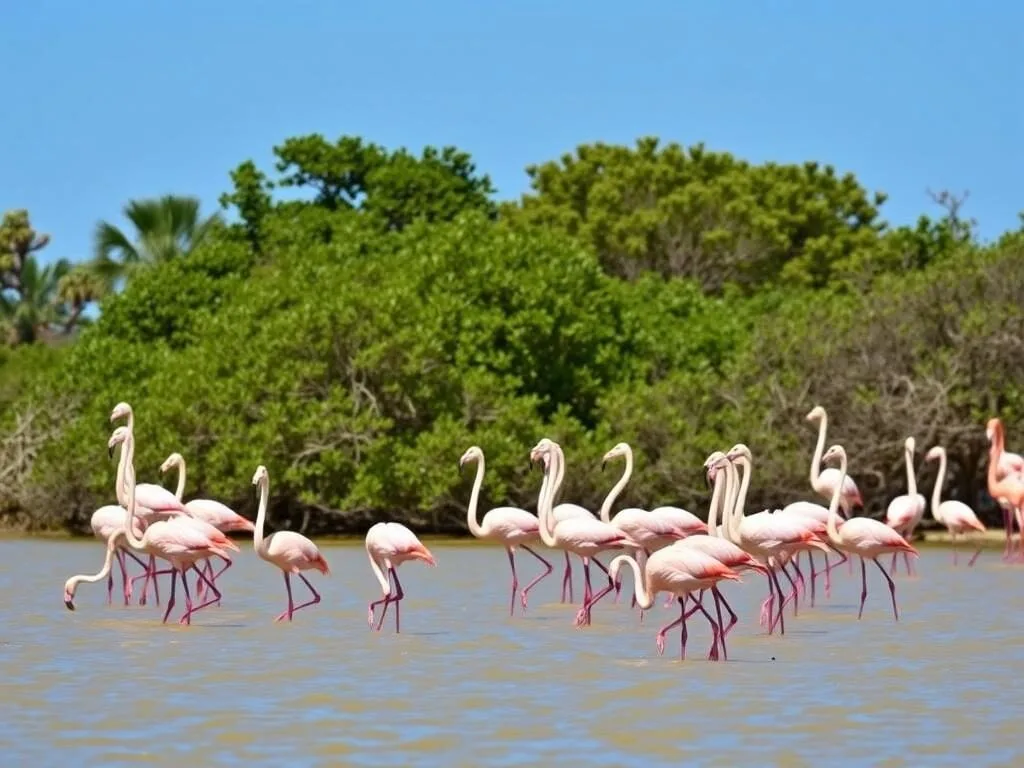
Los Flamencos Sanctuary
Located near Camarones, about 30 minutes from Riohacha, this wildlife sanctuary is home to thousands of pink flamingos. The sanctuary also features mangroves, lagoons, and diverse bird species.
Activity: Take a boat tour through the lagoons to observe flamingos and other wildlife up close.
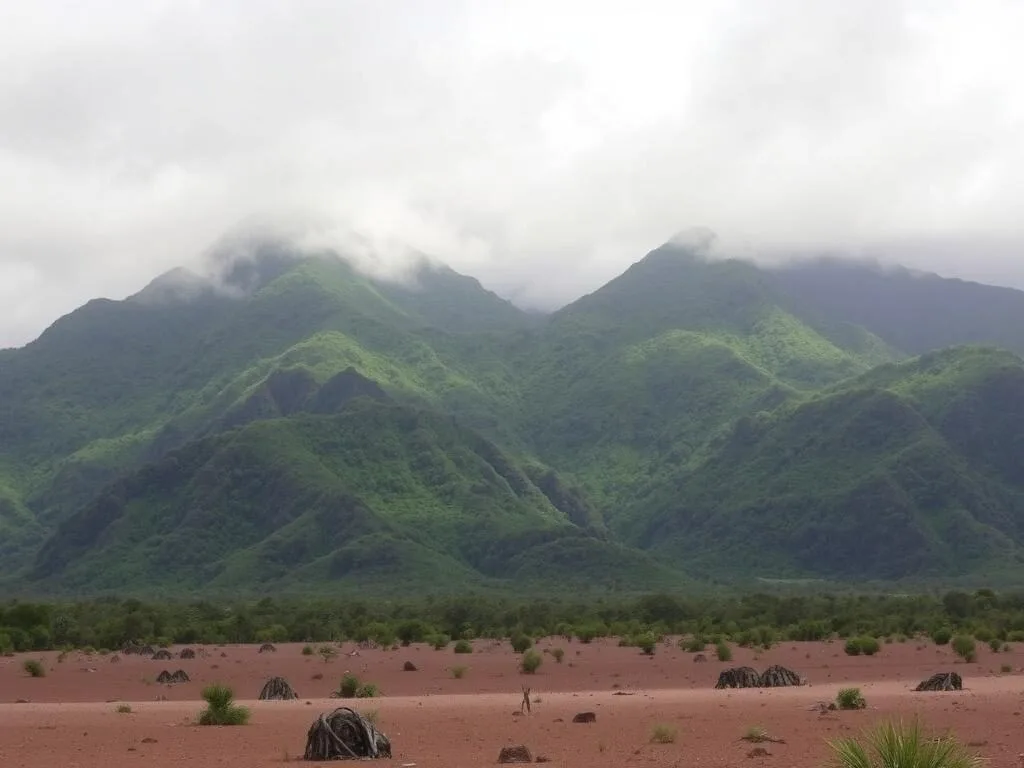
Macuira National Park
This unique national park features a cloud forest oasis in the middle of the desert. The Macuira mountains capture moisture from the air, creating a lush ecosystem that contrasts dramatically with the surrounding arid landscape.
Experience: Hike through the park with a local guide to learn about its ecological importance and sacred significance to the Wayuu people.
Experience La Guajira’s Natural Wonders
Book a guided tour to explore these remarkable destinations with experienced local guides who know the terrain and can share cultural insights.
Cultural Experiences & Wayuu Heritage
One of the most enriching aspects of visiting La Guajira is the opportunity to learn about the Wayuu people, who have inhabited this region for centuries. Their resilient culture has adapted perfectly to the harsh desert environment.
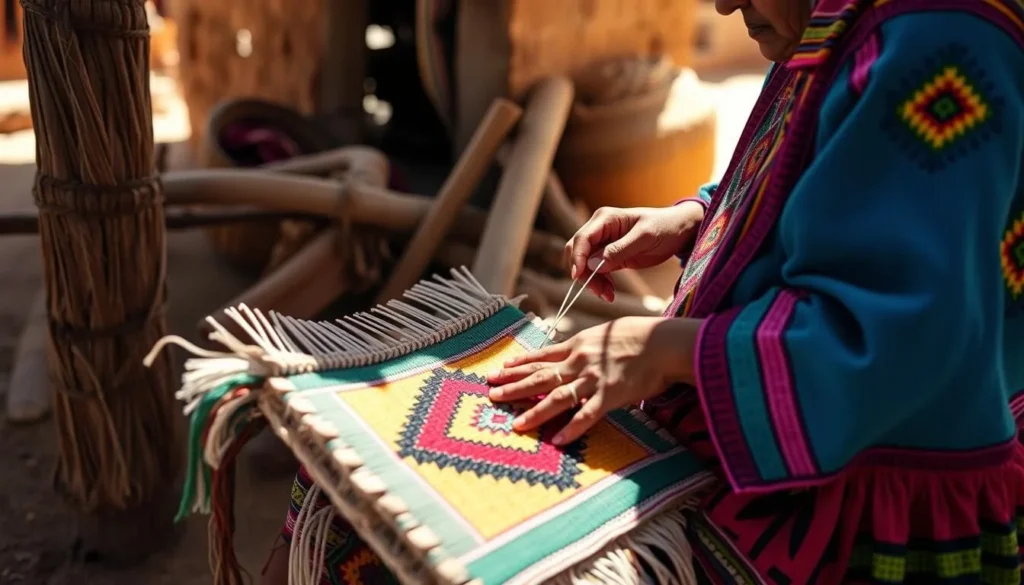
Understanding Wayuu Culture
The Wayuu are Colombia’s largest indigenous group, with a population of approximately 600,000 people living across La Guajira and neighboring Venezuela. They have maintained their language (Wayuunaiki), traditions, and social structures despite centuries of outside influence.
Wayuu society is matrilineal, with family lineage and inheritance passing through the mother’s line. Women play central roles in the community as artisans, cultural guardians, and mediators in their justice system.
Traditional Wayuu settlements, called rancherías, are scattered throughout the peninsula. These consist of several houses belonging to an extended family, often centered around a water source.
The Wayuu have developed unique cultural practices adapted to desert life, including elaborate dream interpretation, a complex clan system, and distinctive funeral rituals that reflect their spiritual beliefs.
Cultural Experiences
Visit a Ranchería
Many tours include visits to traditional Wayuu settlements where you can learn about daily life, traditional architecture, and cultural practices. Some rancherías offer overnight stays in hammocks for a more immersive experience.
Artisan Workshops
Observe Wayuu women creating their famous mochila bags and chinchorro hammocks. These colorful items feature intricate geometric patterns that tell stories and represent clan identities. Purchasing directly from artisans supports local communities.
Traditional Dance
The Yonna dance is an important Wayuu cultural expression performed during celebrations. If you’re fortunate, you might witness this circular dance that represents the relationship between men and women and connections to nature.
“When you visit La Guajira, you’re not just seeing a landscape—you’re entering a living cultural territory where the Wayuu have thrived for generations through their deep understanding of the desert environment.”
Cultural Respect: When interacting with Wayuu communities, always ask permission before taking photographs, dress modestly, and follow your guide’s instructions regarding appropriate behavior. Remember that you are a guest in their ancestral territory.
Outdoor Adventures & Activities
Beyond sightseeing, La Guajira offers numerous opportunities for active adventures. The unique geography creates perfect conditions for several outdoor activities:
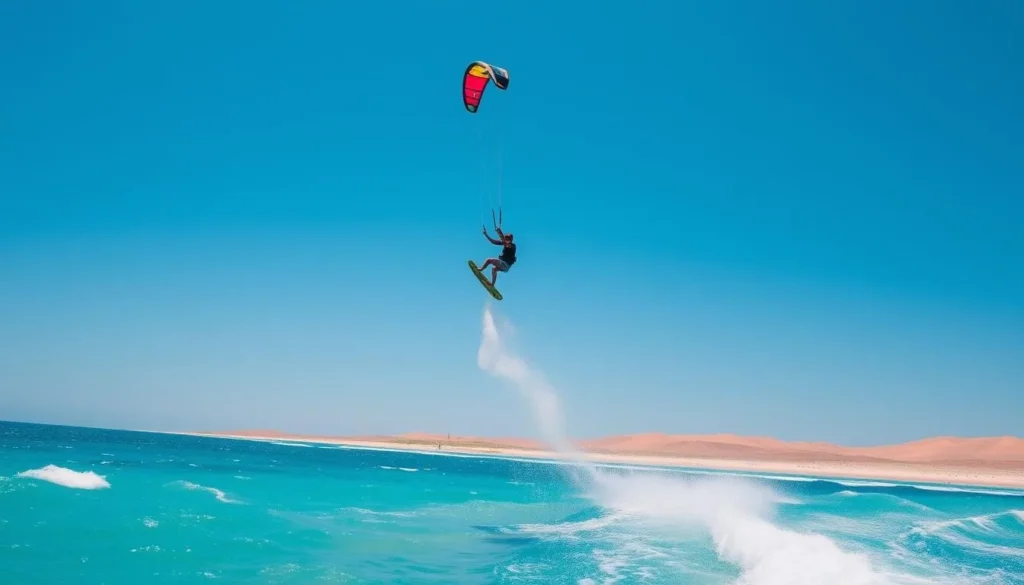
Kitesurfing & Windsurfing
Cabo de la Vela is renowned for its consistent strong winds, making it one of South America’s premier kitesurfing destinations. Several schools offer equipment rental and lessons for beginners to advanced riders.
Best Spots: Playa Ojo de Agua and the main beach in Cabo de la Vela
Season: December to April offers the most reliable winds
Sandboarding
The massive Taroa Dunes provide the perfect setting for sandboarding. Slide down the golden slopes on a rented board, with the unique opportunity to cool off in the Caribbean Sea at the bottom of your run.
Cost: Approximately 15,000-20,000 COP per person for board rental
Tip: Go early morning or late afternoon to avoid the intense midday heat
Swimming & Snorkeling
La Guajira features numerous pristine beaches with crystal-clear waters. While some areas have strong currents, there are several protected bays perfect for swimming and snorkeling.
Best Spots: Playa Ojo de Agua in Cabo de la Vela and Bahía Hondita near Punta Gallinas
Marine Life: Colorful tropical fish, rays, and occasional sea turtles
Bird Watching
La Guajira is a paradise for bird enthusiasts, with diverse habitats supporting numerous species. The Los Flamencos Sanctuary is particularly notable for its flamingo population.
Key Species: American flamingos, scarlet ibis, roseate spoonbills, herons, and numerous migratory birds
Best Time: December to April when migratory species are present
Stargazing
The minimal light pollution and clear desert skies make La Guajira an exceptional location for stargazing. The Milky Way is often visible with the naked eye on moonless nights.
Best Spots: Anywhere away from settlements, particularly in Punta Gallinas
Tip: Bring a red light to preserve your night vision
Photography
The dramatic landscapes, unique cultural elements, and extraordinary light conditions make La Guajira a photographer’s dream. The contrast between desert and sea creates particularly compelling images.
Best Light: Golden hour just after sunrise and before sunset
Must-Capture: Taroa Dunes meeting the sea, flamingos at Los Flamencos, and Wayuu artisans at work
Ready for Adventure?
Book specialized tours for kitesurfing, bird watching, and other activities to make the most of La Guajira’s unique outdoor opportunities.
Safety, Etiquette & Local Customs
Traveling responsibly in La Guajira means understanding both safety considerations and cultural expectations. This remote region requires some additional preparation compared to more touristic parts of Colombia.
Safety Considerations
- Water: Bring plenty of drinking water or water purification methods. Tap water is not potable.
- Sun Protection: The desert sun is intense. Wear high-SPF sunscreen, a hat, sunglasses, and lightweight, long-sleeved clothing.
- Medical Supplies: Bring a basic first aid kit. Medical facilities are limited outside of Riohacha.
- Cash: There are no ATMs beyond Riohacha. Bring sufficient cash for your entire trip.
- Communication: Cell service is limited or non-existent in remote areas. Consider downloading offline maps.
- Roadblocks: Be prepared for roadblocks with small gifts like water, coffee, or cookies.
- Guide: Using a local guide is not just convenient—it’s safer and provides valuable cultural context.
- Travel Insurance: Ensure your policy covers remote areas and adventure activities.
Cultural Etiquette
- Photography: Always ask permission before photographing Wayuu people or their homes.
- Dress: Dress modestly, especially when visiting Wayuu communities.
- Bargaining: While some negotiation is expected when purchasing crafts, remember that fair prices support local artisans.
- Resources: Be mindful of water usage. La Guajira faces severe water scarcity.
- Waste: Pack out all trash. There are limited waste management systems in remote areas.
- Respect: Sacred sites have cultural significance. Follow your guide’s instructions about appropriate behavior.
Language Tip: While Spanish is widely spoken, learning a few basic phrases in Wayuunaiki can be appreciated:
– Anashi (ah-nah-shee): Hello
– Jintut pia? (hin-toot pee-ah): How are you?
– Anasü taya (ah-nah-soo tah-yah): I am fine
– Tashuntaa pia (tah-shoon-tah pee-ah): Thank you
Practical Travel Tips
These final tips will help you prepare for a smooth and enjoyable journey through La Guajira’s unique landscapes:
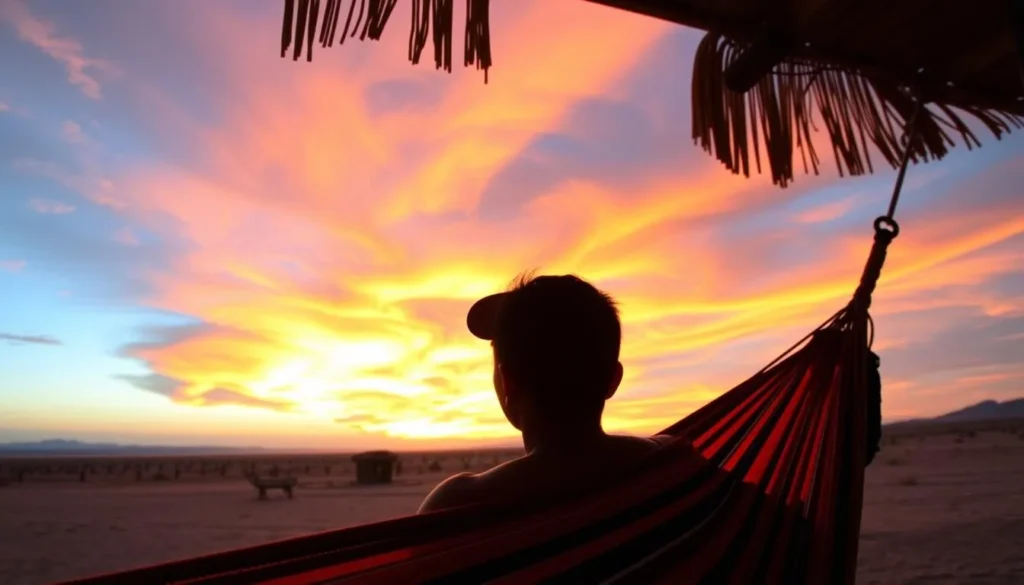
What should I pack for La Guajira?
- Lightweight, breathable clothing (long sleeves recommended for sun protection)
- Swimwear and quick-dry towel
- Hat, sunglasses, and high-SPF sunscreen
- Comfortable walking shoes and sandals
- Headlamp or flashlight (electricity is limited)
- Reusable water bottle and water purification method
- Basic first aid kit and personal medications
- Toilet paper and hand sanitizer
- Light sweater or jacket for cool evenings
- Small gifts for roadblocks (water, cookies, coffee)
- Cash in small denominations
How much does a trip to La Guajira cost?
Budget varies depending on your travel style, but here’s a general breakdown:
- 3-day tour: 600,000-1,200,000 COP ($150-300 USD) per person
- Hotel in Riohacha: 80,000-200,000 COP ($20-50 USD) per night
- Meals in Riohacha: 15,000-40,000 COP ($4-10 USD) per meal
- Transportation to Riohacha: 50,000-200,000 COP ($12-50 USD) depending on mode
- Additional activities: 50,000-100,000 COP ($12-25 USD) for kitesurfing lessons, boat tours, etc.
A comfortable 5-day trip including Riohacha, Cabo de la Vela, and Punta Gallinas typically costs around $400-600 USD per person, all-inclusive.
Is La Guajira safe for tourists?
La Guajira is generally safe for tourists, especially when traveling with reputable tour operators. The main concerns are environmental (heat, remote location) rather than security-related. Following these guidelines will help ensure a safe trip:
- Travel with established tour companies or local guides
- Inform someone of your itinerary if traveling independently
- Avoid displaying valuable items
- Respect local customs and communities
- Stay hydrated and protected from the sun
- Be prepared for basic conditions in remote areas
How can I travel responsibly in La Guajira?
- Choose tour operators that employ local Wayuu guides and benefit local communities
- Conserve water and other resources
- Pack out all trash and minimize plastic usage
- Purchase crafts directly from artisans at fair prices
- Respect cultural norms and ask permission before taking photographs
- Learn about Wayuu culture and history before your visit
- Consider bringing useful donations like school supplies or children’s books in Spanish
Ready for Your La Guajira Adventure?
La Guajira Peninsula offers a travel experience unlike any other in Colombia—or perhaps South America. From the surreal landscape of desert meeting sea to the rich cultural heritage of the Wayuu people, this remote frontier rewards adventurous travelers with unforgettable memories.
While the journey requires some preparation and flexibility, the opportunity to explore one of Colombia’s last untamed regions makes every bumpy road and basic accommodation worthwhile. Whether you’re watching flamingos take flight at Los Flamencos, sandboarding down the Taroa Dunes, or simply swinging in a hammock under the star-filled desert sky, La Guajira’s magic will stay with you long after you leave.
Start Planning Your La Guajira Adventure Today
Use these resources to book your flights, accommodation, and tours to this extraordinary Colombian destination.
The above is subject to change.
Check back often to TRAVEL.COM for the latest travel tips and deals.
